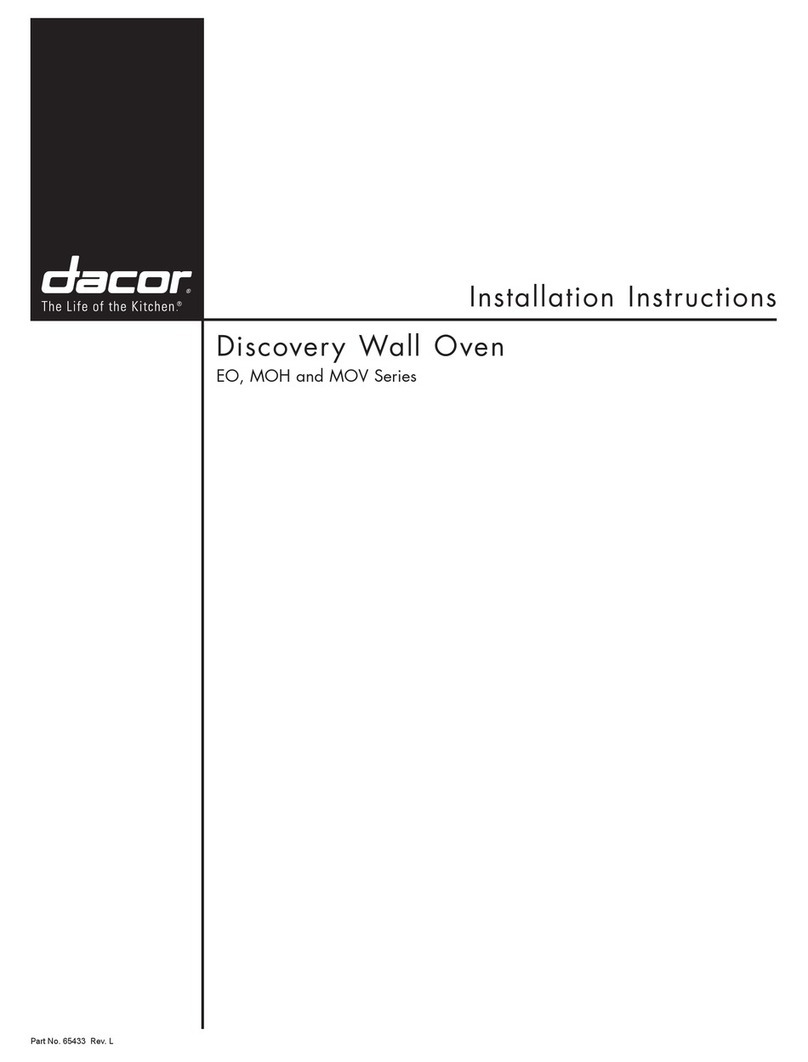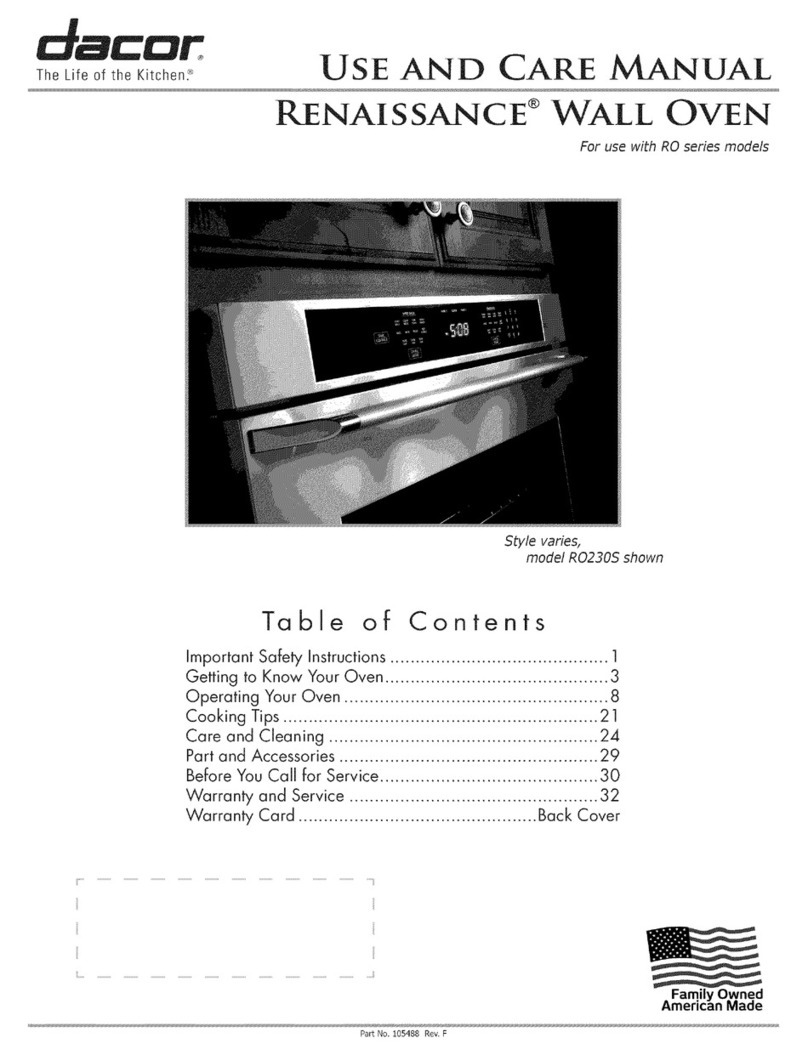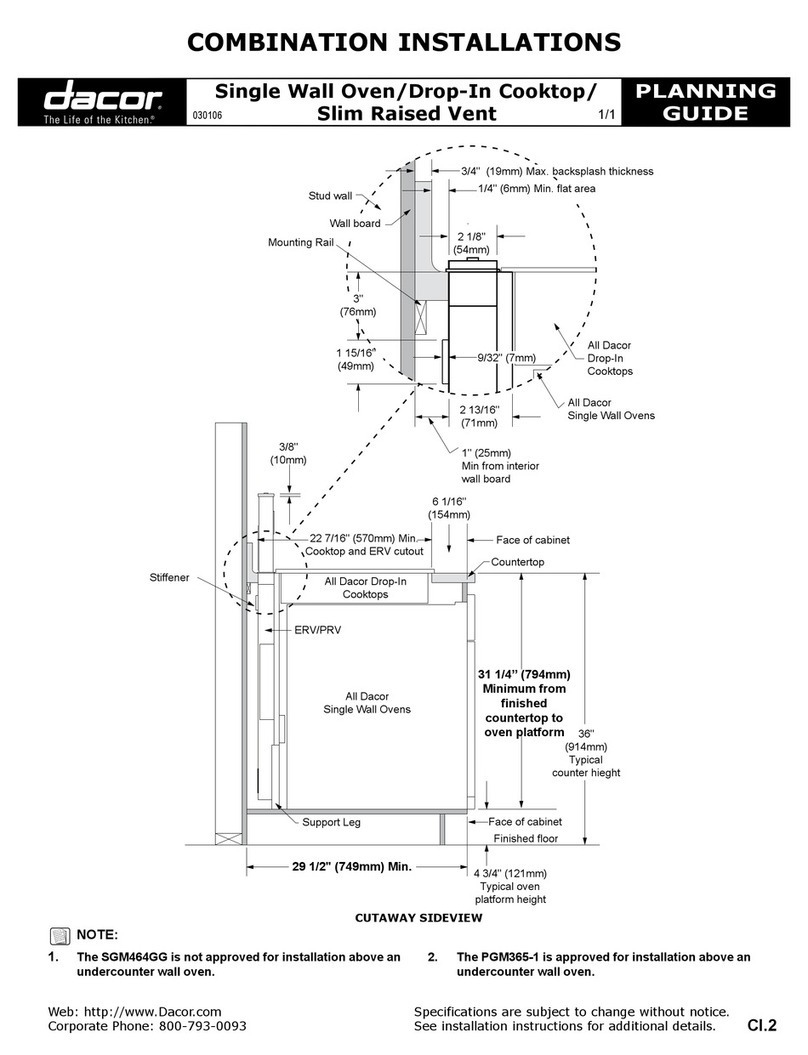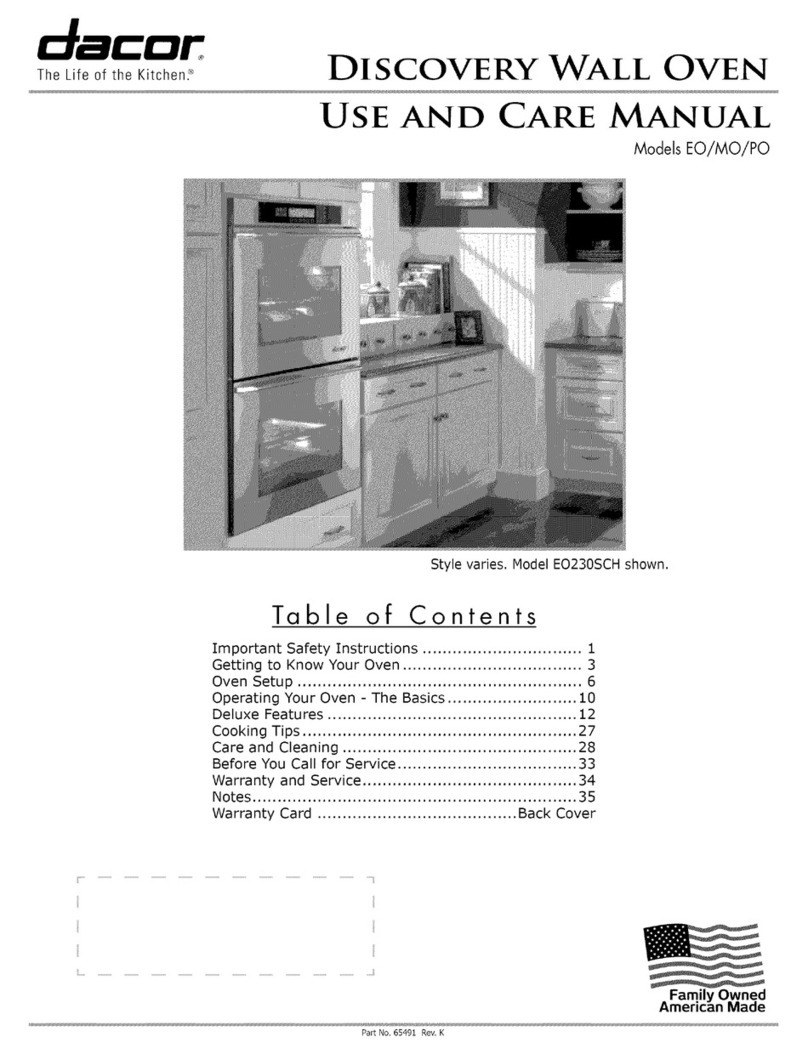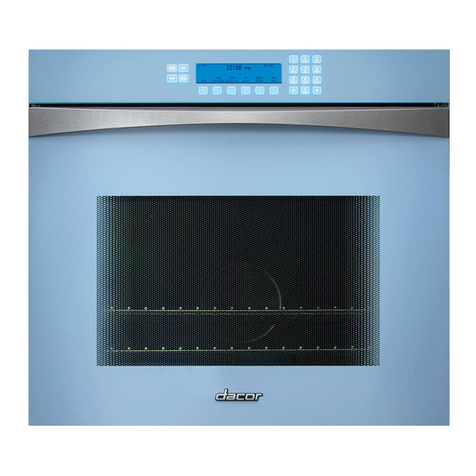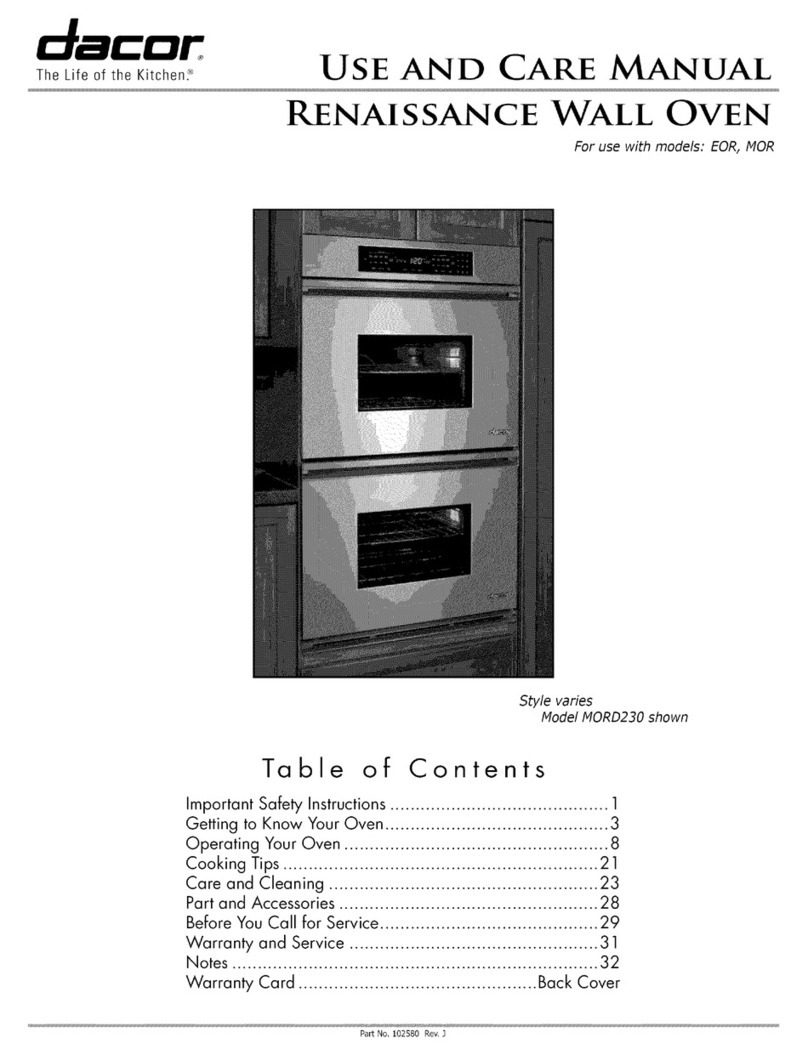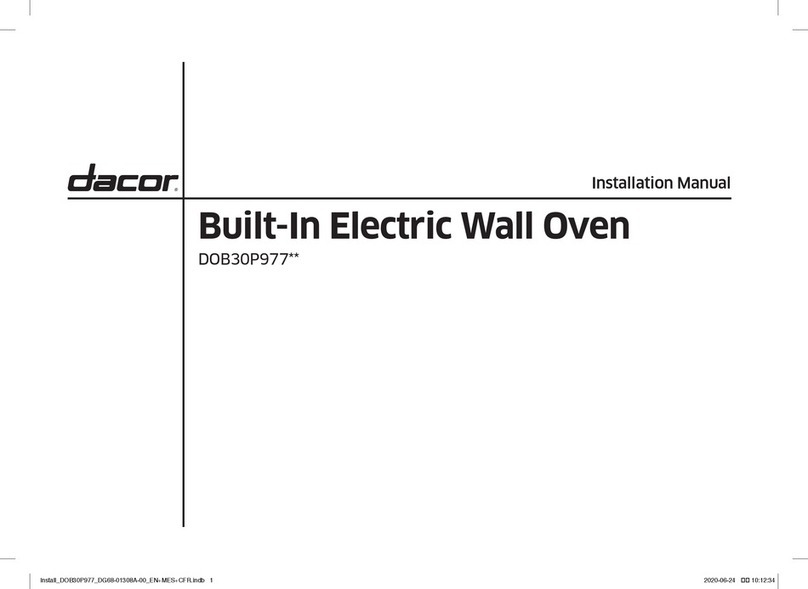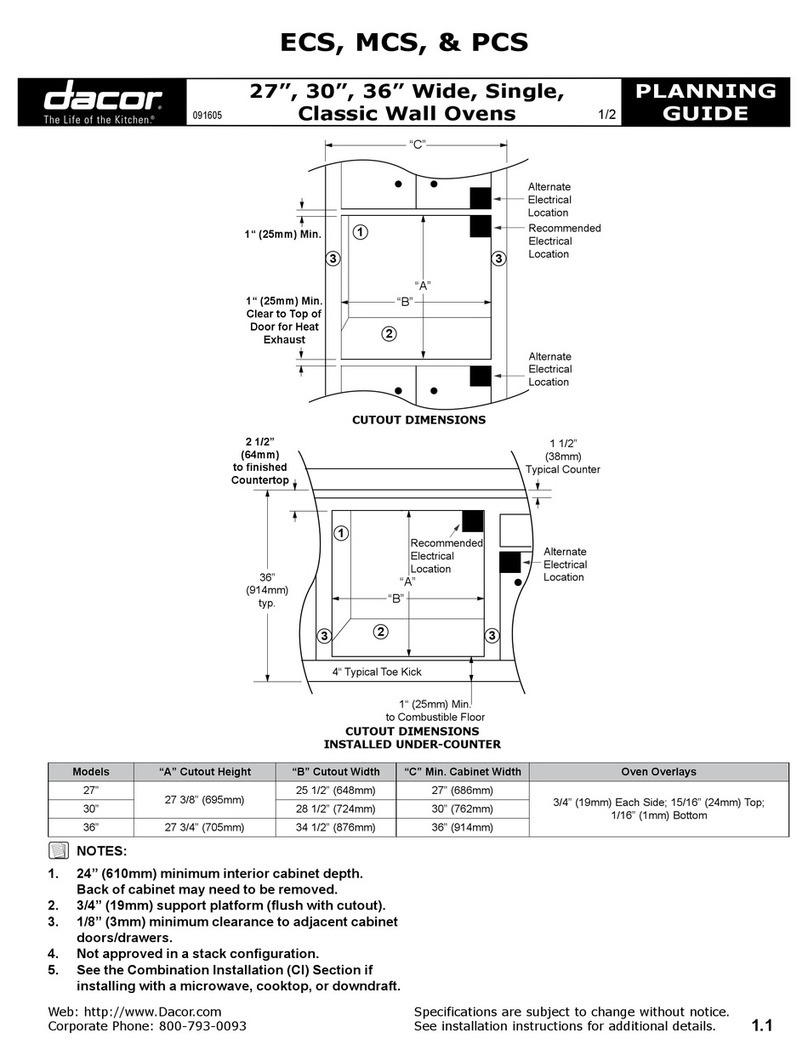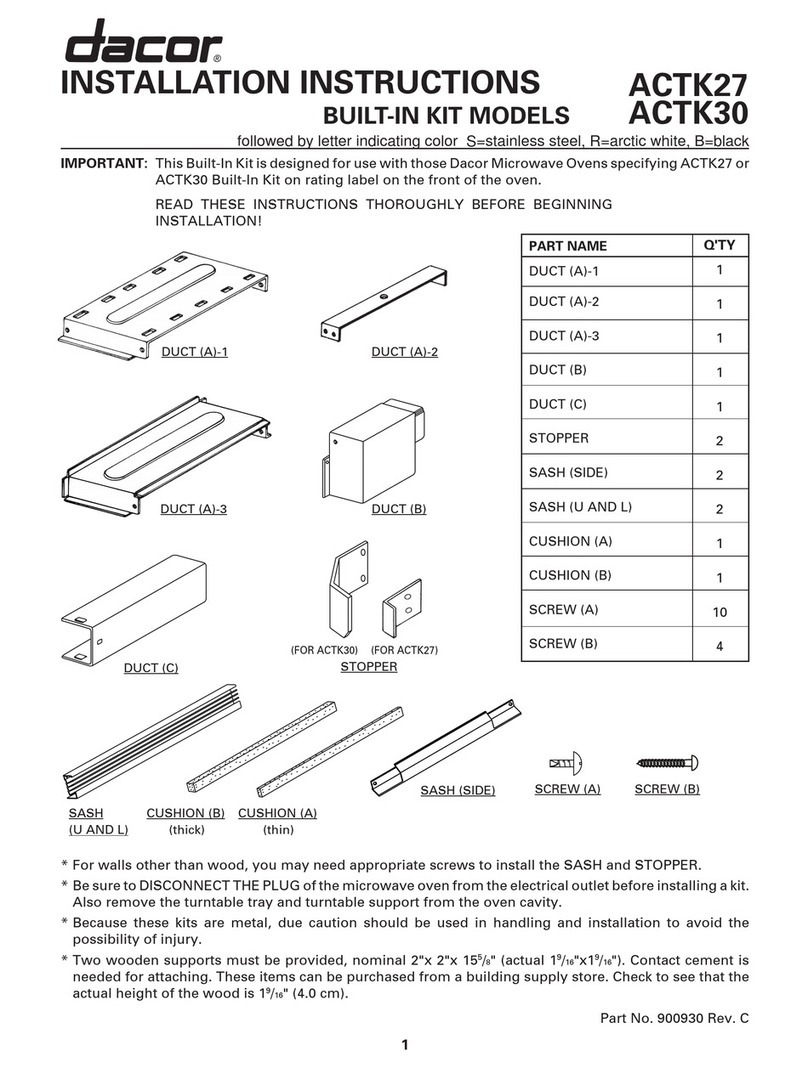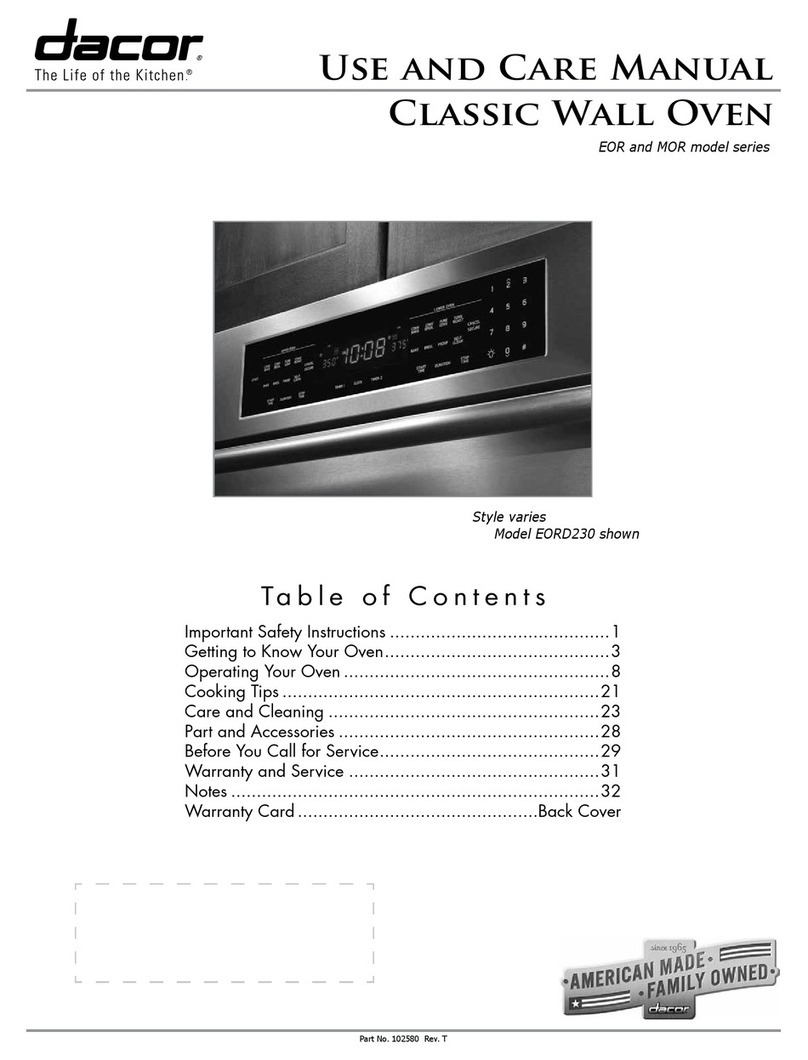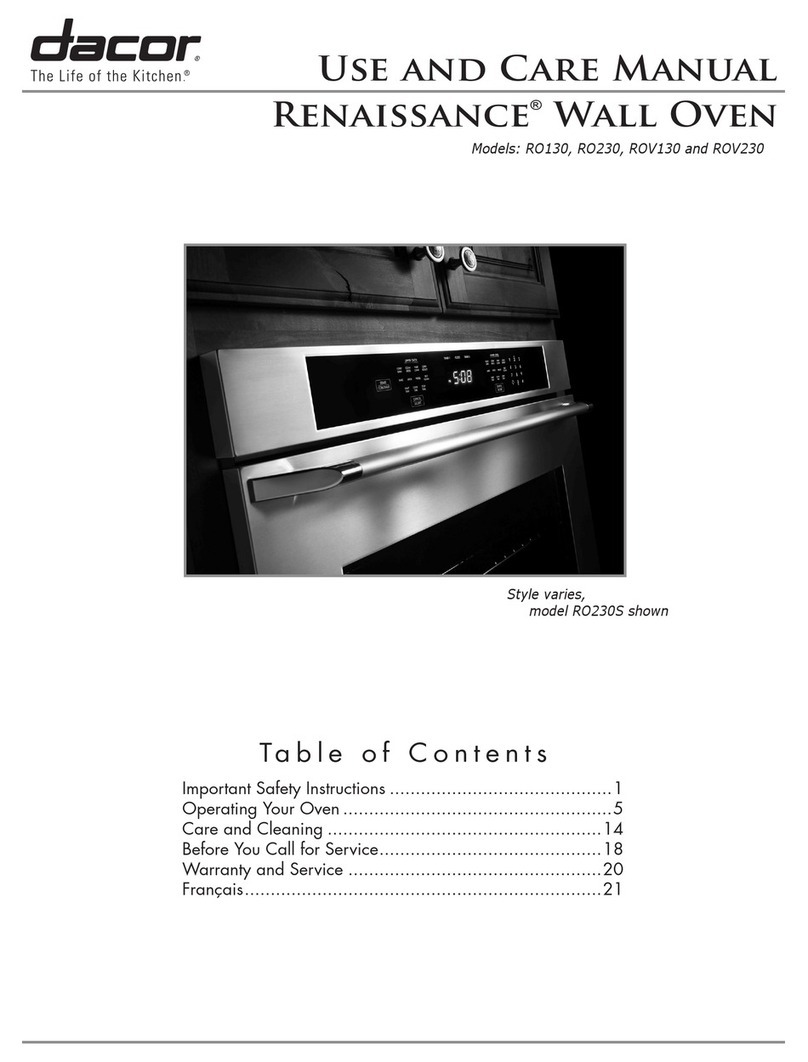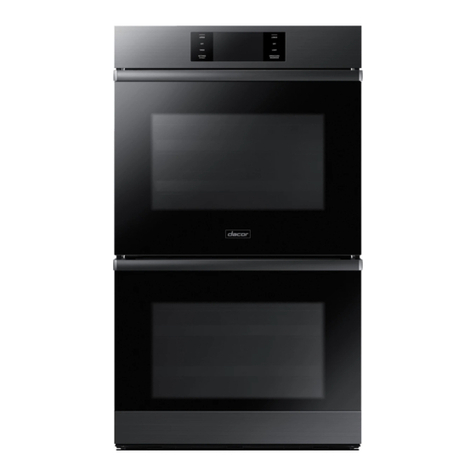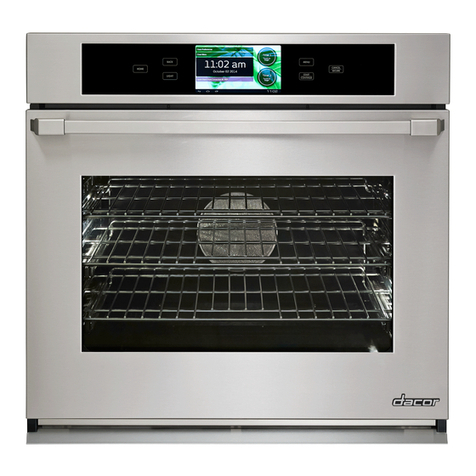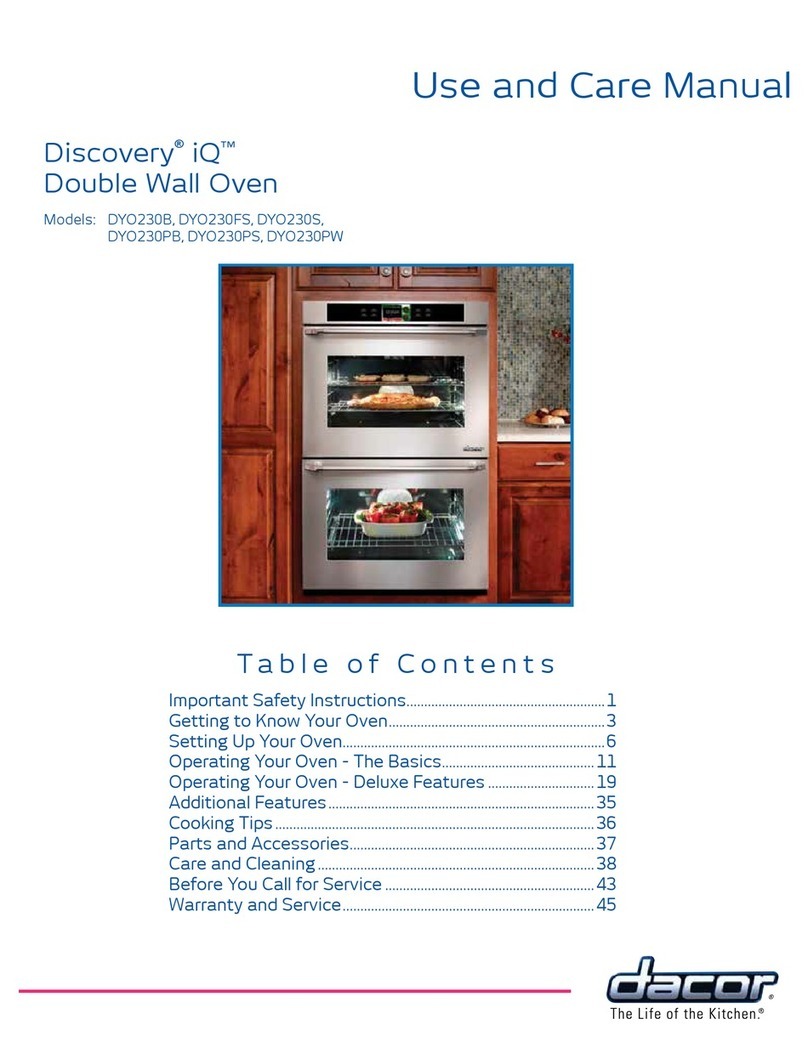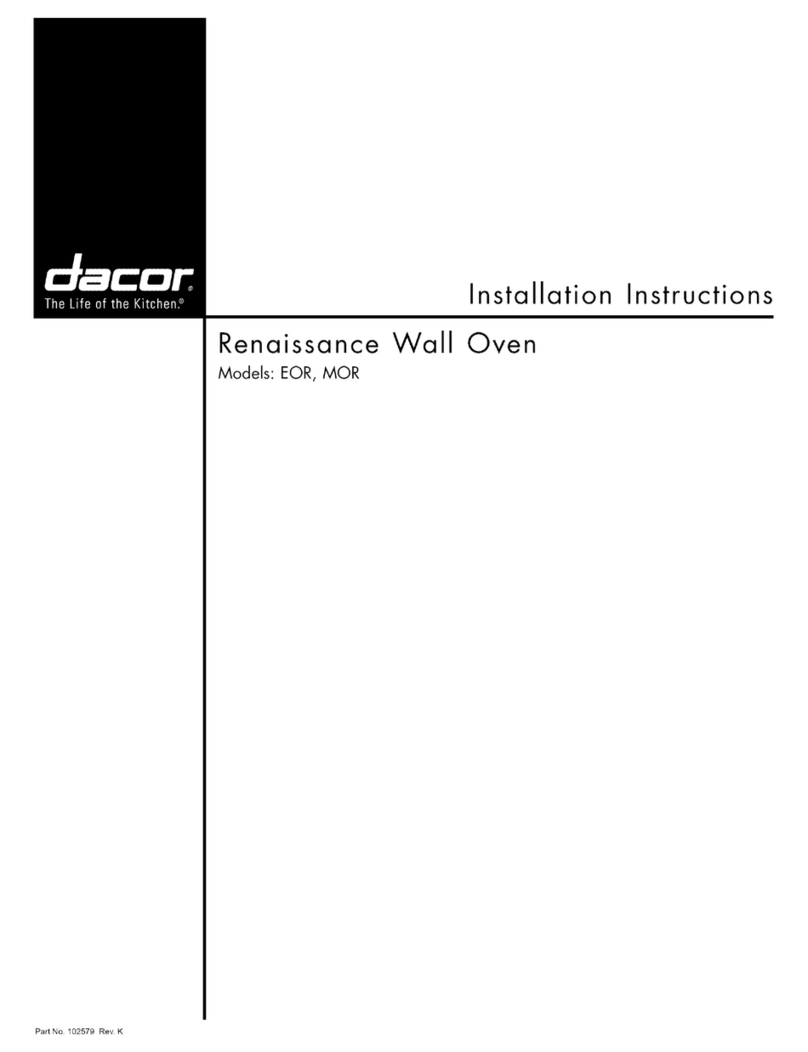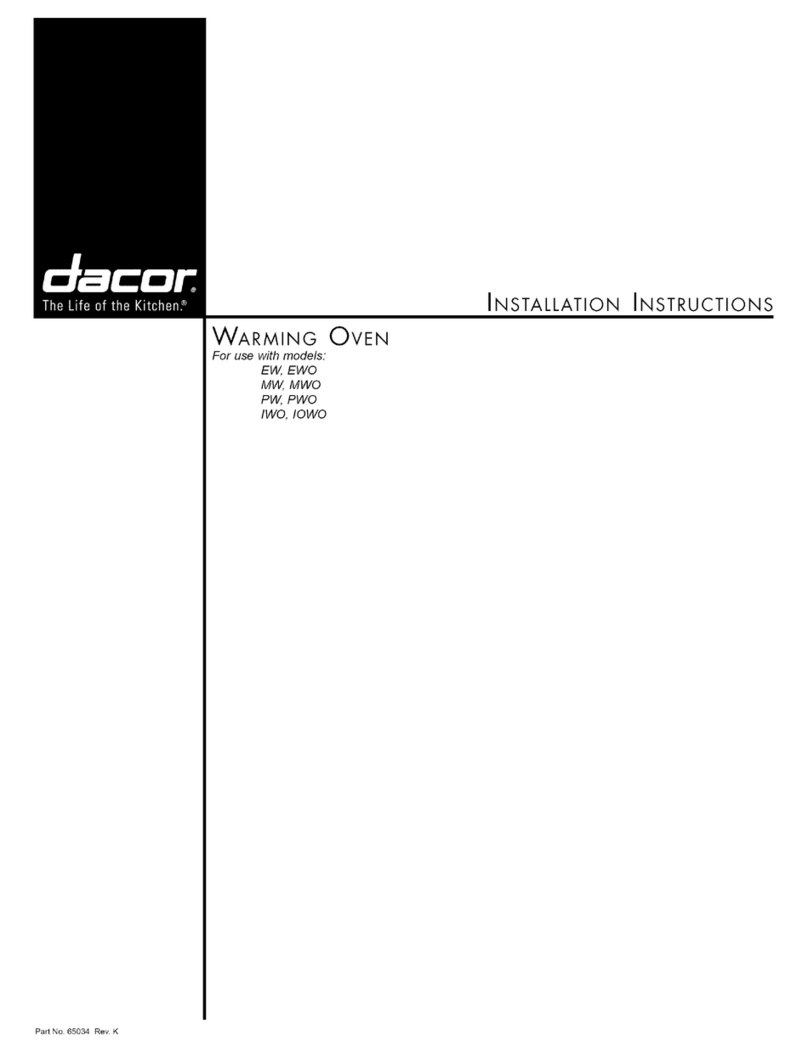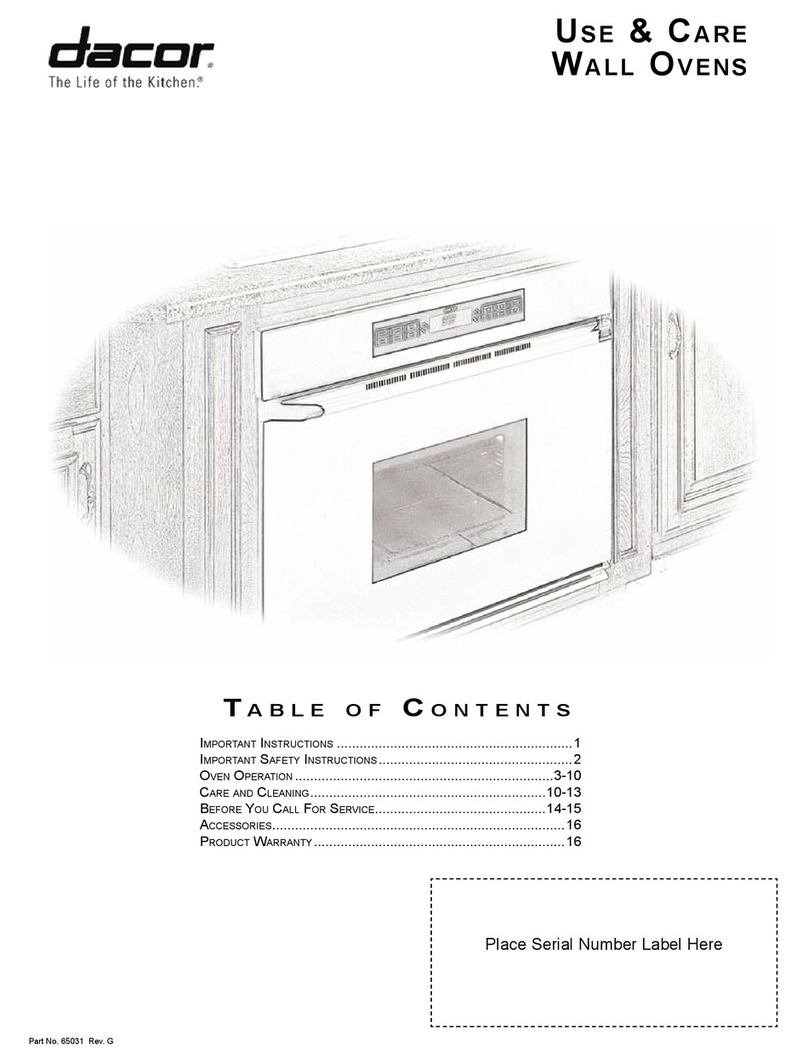
Section 3 – Quick Diagnostic Test
Page 5
Section 3 – Quick Diagnostic Test
Renaissance Wall Oven Quick ERC/Diagnostic Test
Test for Upper and Single Ovens
Test Test Description Requirement
1 Oven lights Press LIGHT 2 or more times and observe that light turns
On and Off.
2 Membrane keypad check Push each individual key and verify audible beep.
3 Controller numeric keys Press CLOCK and press each number key. The number
on the key pressed will appear on the display.
4 Cooling fan function Press #, BAKE and then press down key 10 times and
then START. This will put the unit in Sabbath mode with
target temperature of 100 deg F. Verify that cooling fan is
operational.
5 Bake element Press CONV ROAST, 2, 0, 0, START. When the bake
element is on, measure amperage. (Approx. 10-12) amps
are drawn.
6 Broil element Press BROIL, 2, 0, 0, START. When the broil element is
ON, measure amperage. (Approx.13-14) amps are
drawn.
7 Convection element and convection fan Press PURE CONV, 2, 0, 0, START. When the
convection element is ON, measure. (Approx. 9-10) amps
are drawn. Verify operation of convection fan. If OK,
press CANCEL - SECURE key.
8 Door latch motor engaged Close oven door and press SELF CLEAN, START.
Check door is locked once lock icon comes on solid on
display and element start cycling.
9 Door latch motor disengaged Press CANCEL - SECURE to cancel SELF CLEAN.
Check door is unlocked once lock icon disappears from
display.
10 Meat probe operation Insert meat probe connector and place meat probe on top
of bake element. Press BAKE, PROBE, START. Verify
PRB icon lit on display and the temperature value
reaches a value of 90 degrees F or more.
11 Lock out Press and hold CANCEL-SECURE key for 5 seconds.
Verify membrane is locked out. Press and hold
CANCEL-SECURE key again for 5 seconds. Verify
membrane operational.
12 12/24 HR clock mode Press CLOCK key for 6 seconds until either "12HR" or
"24HR" shows on the display. Press # button to toggle
between 12HR & 24HR.
13 12/24 HR cook mode Press TIMER 1 key for 6 seconds until the display shows
"ON" or "OFF" . Toggle between "ON" and "OFF" and
then set to "ON". Press # button to toggle between 12HR
and 24HR. Press TIMER 2 key for 6 seconds and until
the display shows "ON" or "OFF”. Toggle between "ON"
and "OFF" and then set to "ON". Press # button to toggle
between 12HR and 24HR.
14 UPO settings Press BAKE key for 5 seconds. Set to 00.
15 C/F setting Press BROIL key for 5 seconds. Verify that it is set to "F".
If not, press # key to toggle between "C" and "F".
Continued…


